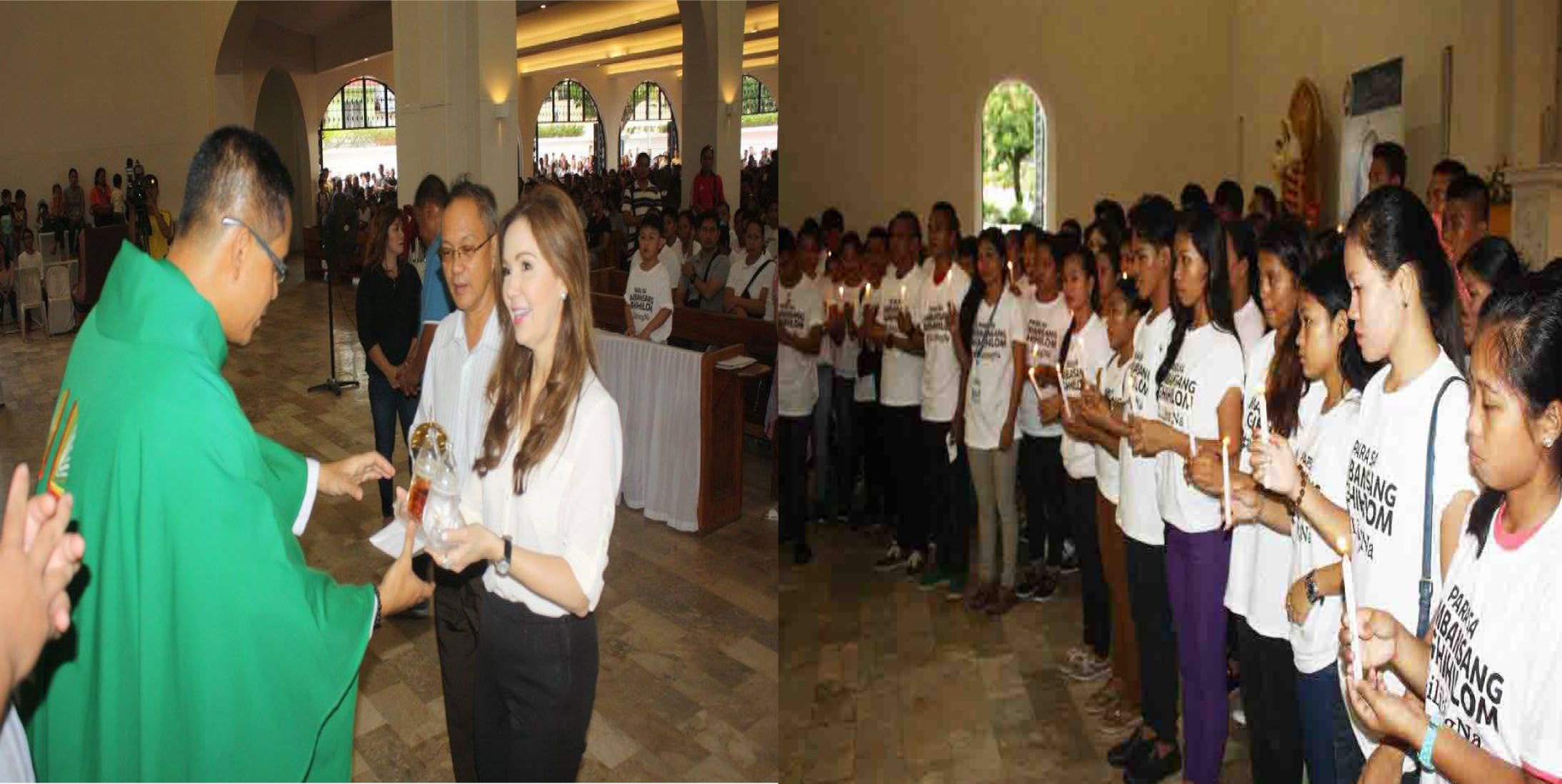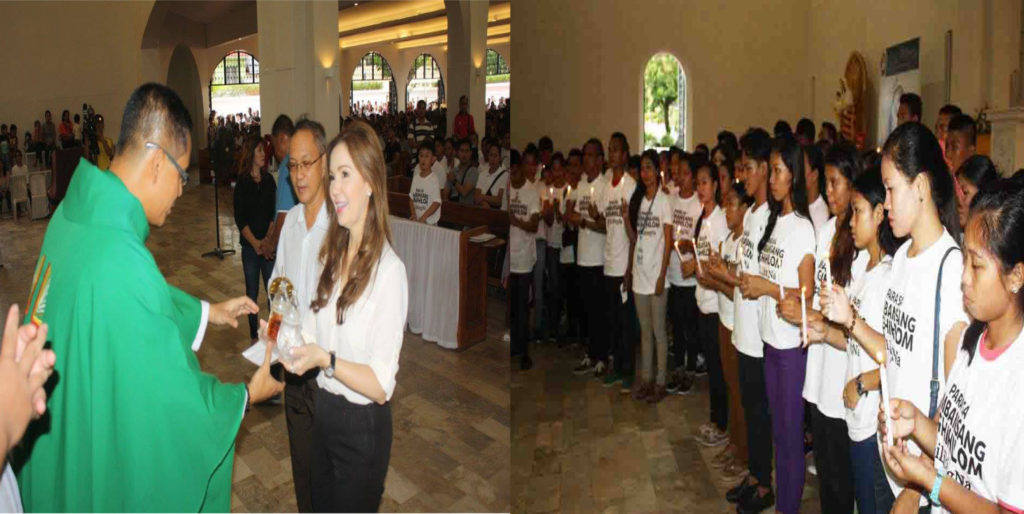TACLOBAN CITY- The Philippine Statistics Authority – RSSO 8 created a dedicated priority lane for Overseas Filipino Workers (OFWs) that has started its operation last September 5, 2016.
This is the PSA’s alternative action program in support to the One Stop Center for OFWs of the Department of Labor and Employment (DOLE).
OFWs may now file and secure copies of their civil registry documents (birth, marriage, death and CENOMAR) without need to wait in the long queue of the regular applicants.
President Rodrigo Duterte has earlier issued a directive making it easier for OFWs to avail the services of the government.
OFWs with confirmed job offers or existing valid contracts can avail of the priority lane. They only need to present to the Care Officer the duty filled-up application form together with their verification slip or certification from OWWA/POEA.
The PSA would like to remind all clients, including the OFWs, that issuance of certificate of live birth is subject to the confidentiality clause of PD 603 (Child and Youth Welfare Code).
If the requester is not any of the following: a) document owner; b) parent; c) spouse; d) direct descendant; e) legal guardian/institution in-charge (if minor), authorization letter and valid ID of the document owner together with the valid ID of the requester are required.
The Tacloban City Census Serbilis Outlet located at Congressman Mate Avenue, Barangay Abucay, Tacloban City is open from Monday to Friday, from 8:00 AM to 5:00 PM. Cut-off time for payment is at 4:00 PM.
For inquiries and further information, please contact our office with numbers (053) 530-0939 or (053) 321-5153 or (63) 917-862-6695, and email addresspsa_reg8@yahoo.com.(PR)
PSA creates priority lane for OFWs
Gen. ‘Bato’ to lead PNP anniversary

Expected to rally police in EV on anti-drug campaign
TACLOBAN CITY – Controversial PNP Director General Ronald ‘Bato’ de la Rosa will arrive today (Sept.13) to join the regional celebration of the 115th anniversary of the country’s police force.
During his one-day visit, the country’s head of the Philippine National Police (PNP) is expected to call all members and officials of the police organization to rally behind on the campaign of the Duterte administration against the proliferation of the illegal drugs.
de la Rosa will speak before the members and officials of the PNP-8 at the Camp Ruperto Kangleon in Palo town.
“The PNP chief wants to celebrate the 115th anniversary in all regional offices in the country. This is part of his assessment of the current situation in different regions,” Chief Insp. Ma. Bella Rentuaya, police regional information officer, said.
After the arrival honors, de la Rosa will entertain questions from the media in a brief press conference.
He will then grace the anniversary program by giving awards to about 20 outstanding police officers, police units, and local government units who have been active partners of the organization’s anti-drug war and in rendering police service to the community.
“The highlight is the giving of awards and recognitions to the performing units and individuals who have contributed to the success of various police operations,” Rentuaya said.
Among the awardees is Chief Insp. Jovie Espenido under the special individual award category. He was recognized for his intensified anti-drug war campaign in Albuera, Leyte particularly against Mayor Rolando Espinosa Sr. and son Kerwin, considered the region’s top illegal drug players.
Around 500 policemen will witness the celebration. Some of them, including top officials, will join the PNP chief in a boodle fight lunch.
De la Rosa will then preside a command conference to be attended by key PNP regional officials, provincial directors and city directors.
Provincial and city police chiefs are expected to present their accomplishments. The day’s event will be capped with a fellowship night.
The anniversary is anchored on the theme “Hamon ng Pagbabago, Pinag-ibayong Serbisyo.”
The PNP chief, handpicked President by Rodrigo Duterte to lead in his anti-drug war, is expected to order cops in the region to ramp up their efforts to suppress the drug menace within the first six months of his administration.
The PNP chief will assess the region’s enforcement of two major programs he introduced – “Operation Tokhang” and “Project Double Barrel.”
Tokhang is a combination of Visayan word, which means to approach and persuade. Under the said operation, police knocked on doors of known drug traders and dependents, asking them to stop the illicit practice.
According to Rentuaya, there are about 20,000 self-confessed drug pushers and users who yielded to authorities in the region since the campaign started on July 1.
Around P100 million worth of shabu have been seized by the police in the region in the course of their campaign.
The other program is based on a concept of double barrel gun, which fires two in just one squeeze of the trigger.
The operation will simultaneously attack big-time drug lords and street-level trading.
The “first barrel” is directed to those at the top, while the “second barrel” is aimed at those at the bottom, which involves reforming drug users who want to get rid of drugs.
By: Sarwell Q. Meniano
Marcos’ 99th birthday remembered


Call for his burial at the ‘Libingan ng mga Bayani’
TACLOBAN CITY- Residents of this city joined in observing the 99th birthday of the late former president Ferdinand Marcos, Sr. on Sunday (Sept.11).
The city government, led by Mayor Cristina Gonzales Romualdez, offered a Mass for Marcos at the Santo Niño Church as a “grateful remembrance” for the late president.
Marcos’ wife, Imelda, is from Leyte.
Mayor Romualdez delivered a short speech after the Holy Mass attended by hundreds of people. Several young men and women wearing white t-shirts emblazoned with words “Para sa Pambansang Paghilum #Ilibang na.”
The city mayor extolled the late president saying that he initiated several projects and programs during his rule that up to now are being enjoyed by the people of Eastern Visayas, in particular.
Marcos, if alive today would be 99 years old, was the country’s president for 20 years.
His family and supporters have asked the national government to bury him at the “Libingan ng mga Bayani” but being opposed by his political opponents and victims of human rights violations alledegely committed during his regime.
Mayor Romualdez joined in the call to give the former president a “proper burial” that he deserved being a former head of state and a soldier who served the country during the World War II.
Bernardita “Bering” Valenzuela, city information officer, said that Marcos deserves to be buried at the Libingan ng mga Bayani as he “fits” to the definition of a hero.
“If there is a definition of a hero, which is a person who has done so much for his country, then he falls on the definition,” Valenzuela said.
The Sunday mass was described by her as a “grateful remembrance of a man who did much for our city and region.”
Valenzuela, served as a personal staff of former vice president Salvador Laurel, said that Marcos initiated projects in the region that stood times.
“He really invested in our city and region. The projects that Pres. Marcos gave to our city and region (like the) San Juanico Bridge,” she said.
“Without the San Juanico Bridge, no one could take a land trip all the way from Metro Manila to Davao City,” Valenzuela added.
The structure, she added, is an “enduring testimony” on how Marcos served the region and the rest of the country well. (JOEY A. GABIETA)
DILG, PNP forge campaign aim to eliminate illegal drugs, criminalities
TACLOBAN CITY- The Department of Interior and Local Government(DILG) and the Philippine National Police(PNP) in the region are to campaign for the elimination of illegal drugs and criminal activities.
The ambitious campaign, dubbed as Mamamayang Ayaw Sa Anomalya – Mamamayang Ayaw Sa Illegal na Droga (Masa-Masid), aim to end proliferation of illegal drugs and existence of criminal acts by December this year.
Marivel Sacendoncillo, officer-in-charge of the DILG-8, said that she and Chief Supt. Elmer Beltejar, police regional director, will still discuss exactly how they will implement the campaign for them to hit their target.
Masa-Masid is a community mobilization program that will assist government agencies in the campaign against illegal drugs, criminality and corruption.
“Community members will help in gathering information of the security agency but the most important way how they can help is in assisting those who are into illegal drugs to recover,” Sacendoncillo said.
Sacendoncillo added that success of government program like the campaign against illegal drugs need participation and help from the community especially the family.
“Whether you like it or not, the community, primarily the family, is the most affected. That is why we need to strengthen our family to ensure that no member will be involved in the illegal drug use and if there is, they should be the first one to initiate the action to help their family members who are addicted to illegal drugs,” Sacendoncillo added.
In the region, all of its 4,390 villages will be involved in the campaign.
And out of this number, 839 are drug-affected representing 19 percent of all the villages in the region based on the report that Philippine Drug Enforcement Agency.
Of the affected villages, 361 are in Leyte; 219 in Southern Leyte; 75 in Samar; 74 in Eastern Samar; 59 in Northern Samar and 51 in Biliran. (ROEL T. AMAZONA)
Leyte SP passed supplemental budget for LSA operations this year
TACLOBAN CITY – Institutionalizing the government-run sports program at the Leyte Sports Academy (LSA) is seen as a solution to make the program last.
Leyte Vice Governor Carlo Loreto said that the provincial board is already readying an ordinance institutionalizing the six year program which was started during the administration of former governor Carlos Jericho Petilla aimed at developing a comprehensive sports program for Leyte’s aspiring athletes.
It was earlier reported that LSA’s operation this year is facing a budgetary problem after the Commission on Audit disallowed the provincial government to use budget under Special Education Fund for sports development.
The fund supports all the necessary equipment, accommodation and lodgings, trainors and coaches of the sports scholars under the program. They are likewise enrolled in academic training.
Loreto admitted that the program’s operations is very expensive for which the province spends P 1.5 million to P2 million annually.
However, Loreto said that with the world-class performance and achievements the LSA athletes have given the province in national and international competitions, the program should continue.
During the regular session on September 6, members of the Sangguniang Panlalawigan approved a supplemental budget to support LSA operations for the remaining part of the year.
“By the next session, we are working to bring to the floor the ordinance institutionalizing the program,” Loreto said.
During the 6th founding anniversary of LSA last month, Governor Leopoldo Dominico Petilla advanced the idea of expanding the program to include athletes from other parts of the region.
From athletics, swimming and boxing when it opened in 2010, LSA now also offers scholarships in powerlifting, wrestling, taekwondo and wushu.
LSA currently has 120 sports scholars.
LSA-bred 16-year old Rowella Abrea of Matag-ob, Leyte is the latest addition of world-class athletes produced under the program.
Abrea recently won two medals at the World Powerlifting Championship in Warsaw, Poland. She won a silver in the deadlift category and a bronze in the bench press category in a competition participated by other countries such as USA, Russia, Japan, Ukraine and Poland.
(AHLETTE C. REYES)
FEATURE STORY: Mayor Cristina Romualdez shares her vision for Tacloban

Photo: Mayor Cristina’s Facebook
By: ALVIN GZ. ARPON
On her first over 60 days as Tacloban City’s chief executive, Mayor Cristina Gonzales Romualdez is already creating waves of hope, confidence and approval among her constituents on what she has been doing this early to preside over her role. And what is quite impressive is her visions for Tacloban and what to expect of her during her incumbency. She articulates her desire to focus sincere efforts to help her constituents especially the poor to rise from their present level of abject poverty towards economically stable lives.
Deep in her thoughts is how to uplift their economic conditions, especially those living in squatter areas along the shores of the city. Mayor Cristina (she is popularly called Kring-kring, but I like to address her this way) has already set up CLEP the (Comprehensive Livelihood and Entrepreneurship Program) with the less privileged as benefactors. She expressed pleasure and contentment at the progress in providing dwellings for the thousands of homeless families who were victims of the supertyphoon ‘Yolanda’, the world’s strongest typhoon to hit inland of which Tacloban was considered as its ground zero. About 15,000 families were affected but of the moment some 2,000 families have been moved to their new dwellings. The number of families relocated at the northern part of the city is expected to rise in the next few weeks.
Mayor Cristina is extra appreciative of the substantive response of the national government thru the National Housing Authority (NHA), the GMA Kapuso Foundation, a private establishment and an international group, Habitat for Humanity, who extended substantial help in these rehabilitation efforts. The pretty lady mayor has specifically mentioned the NHA who provided the most. By December 2O16 more families will be added to the 2,000 families now living in new homes. Mayor Cristina has displayed her sense of love to those young jobless yet, ladies by offering jobs in her saloon in the City. The Cristina Saloon offers services, not only for beauty upkeep but physical treatment as well in reflexology and massage in her saloon.
The city government has a total manpower of 900 regular employees and also has accommodated about 2,000 young but able professionals via job orders to augment workers at the City Hall. Very impressive are the several buildings where offices are located now stands within the City Hall site. Those buildings were constructed under the administration yet of her husband, former Mayor Alfred Romualdez. Road expansions in the city proper and in barangays, farm to market roads are regular projects ongoing and being undertaken.
Mayor Cristina has also recommended plans to improve water delivery system to the Leyte Metropolitan Water District to provide adequate water supply to all residential homes in the city, which is still wanting as of now. Noteworthy is it appears that there are no serious threats to crime in the city. She, however, will address the drug proliferation in the city especially when she learned that about 1,000 people who surrendered are involved in the drug menace. Mayor Cristina expressed her appreciation and thanks to President Rodrigo Duterte in his all-out campaign against illegal drugs in the country. Her vision for Tacloban is to have a city further developed to invite more investors and always to be safe, clean and beautiful.


